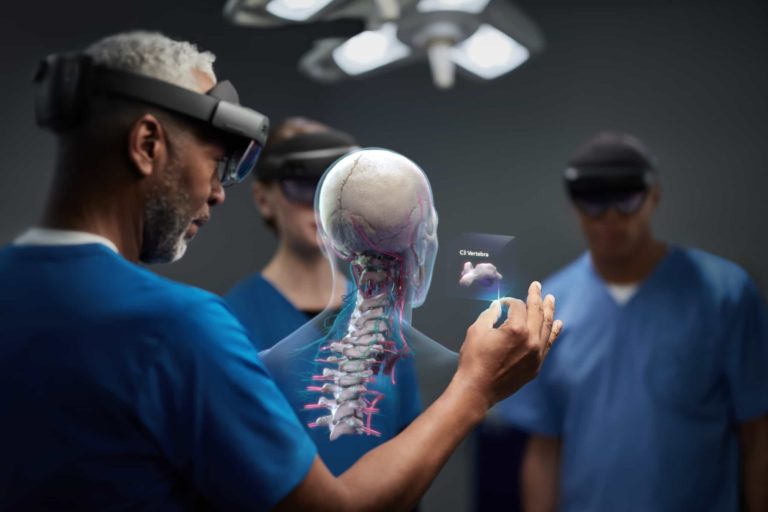
Though we spend ample time examining consumer-based AR endpoints, greater near-term impact is seen in the enterprise. This takes many forms including brands that use AR to promote products in greater dimension, and industrial enterprises that streamline operations.
These industrial endpoints include visual support in areas like assembly and maintenance. The idea is that AR’s line-of-sight orientation can guide front-line workers. Compared to the “mental mapping” they must do with 2D instructions, visual support makes them more effective.
This effectiveness results from AR-guided speed, accuracy, and safety. These micro efficiencies add up to worthwhile bottom-line impact when deployed at scale. Macro benefits include lessening job strain and closing the “skills gap,” which can preserve institutional knowledge.
But how is this materializing today and who’s realizing enterprise AR benefits? Our research arm ARtillery Intelligence tackled these questions in its report: Enterprise AR: Best Practices & Case Studies, Vol 2. We’ve excerpted it below, featuring Medivis’ AR deployment.
High-Stakes Outcomes
Some of the greatest technological advancements of the past few decades have occurred in the field of medical imaging. This includes now-routine technologies used in a range of medical procedures. We’re talking everything from X-rays of broken bones to CT scans to ultrasound.
Though these technologies are generally seen as mundane, non-glamorous, and outside of the realm of Silicon Valley startups, they’re more meaningful than many “newer” innovations. We’re talking high-stakes outcomes such as saving lives, assisting surgery, and detecting diseases.
But these two worlds of medical imaging and emerging digital tech come together with AR. And one practitioner operating at that intersection is Medivis. The AR-focused medtech player has incorporated Microsoft’s Hololens 2 with its Surgical AR software to enable hands-free guidance.
One example is ablation. This is the process of deactivating internal body parts that cause damage, such as tissue that produces electrical signals that cause irregular heartbeats. That can involve removing or scarring the offending tissue arthroscopically using a catheter.
This traditionally involves taking about ten CT scans over a 2.5-hour period to form a three-dimensional coordinate map. A catheter is then placed into position using that guide. Using this involved and time-consuming traditional method, the average error rate is 2.2 centimeters.
Time is Money
By comparison, Surgical AR and HoloLens 2 allow Medivis to scan a given patient once, then place the catheter. Advantages include speed and accuracy – to the tune of millimeter-level accuracy in a fraction of the 2.5-hour procedure outlined above. As always, time is money.
Another area Medivis is incorporating AR is cerebrovascular bypass. This intricate procedure is performed when the brain doesn’t get enough blood supply. Surgeons route in another blood vessel and stitch it to the desired location using the finest sutures physically possible.
The traditional procedure uses CT scans to locate blood vessels. Surgeons then translate that image to 3D space to physically locate the vessel. Using AR, Medivis’ technology can use that same CT scan overlayed on the patient for a more positionally-accurate line-of-site reference.
According to Medivis, 200+ plus procedures have been done using this method, and it continues to gain recognition as an emerging standard in cerebrovascular bypass. And given AR’s early stages, all the above methods will continue to evolve and bring value to healthcare providers.
We’ll pause there and circle back in the next case study with more enterprise AR best practices. Meanwhile, read the full report here…

